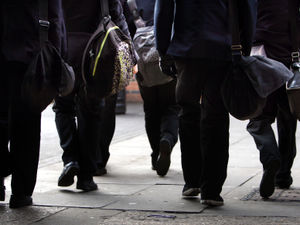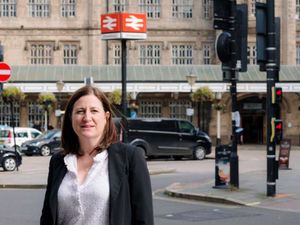Ten Shropshire secondary schools are full or over capacity, figures reveal
Multiple secondary schools in the county are full or over capacity, figures reveal.

The Association of School and College Leaders (ASCL) said a record rate of overcrowded schools nationally is being driven by increased demand for secondary places, compounded by "perceptions linked to Ofsted reports".
Department for Education data shows that 10 secondary schools in the county were at or above full capacity as of May 1 last year – four in the Shropshire Council area and six in Telford & Wrekin.
In 2018-19 – the most recent comparable year due to coronavirus pandemic restrictions – there were eight 'overcrowded' schools across the county.
It meant 6,287 pupils in the area were affected by overcrowded schools last year – among around 880,000 nationwide.
A school is at or in excess of capacity when the number of pupils enrolled is greater than or equal to its number of places.
Across England, 22 per cent of secondary schools reached this threshold last year – up from 17 per cent in 2018-19, and the highest proportion in a decade.
Shropshire Council has been expected to carry out a review of required school places amid increasing housing development across the county – particularly in the areas of Shrewsbury, Tern Hill, Bridgnorth, and Ironbridge.
Two schools in the county have been the focus of Government funding for the 'national school rebuilding programme'.
Belvidere School in Shrewsbury, which is an academy, was included in phase one of the programme and is being completely rebuilt.
St Andrew’s CE Primary in Shifnal, a maintained school, has been included in phase two of the programme and will be either significantly refurbished or rebuilt.
Telford & Wrekin Council last year completed a project at Telford Langley School to provide 300 extra places, with further expansions are planned for other school sites across the borough.
The ASCL said a large contingent of children are moving into secondary education, and though local authorities are experienced at forecasting demand, it is not an exact science.
Geoff Barton, general secretary of the organisation, added: “The increasing demand for secondary places is complicated by perceptions linked to Ofsted reports with higher-rated schools often heavily oversubscribed and significant spare capacity at lower-rated schools.
“It drives a vicious cycle with improvement harder to secure in schools which face the greatest challenges.
"The current approach needs a rethink so that it is more supportive and less punitive, and so that every family has access to a good local school place.”
In Telford and Wrekin, the busiest secondary school was Madeley Academy, which had 1,100 school places but 1,235 children on its roll – meaning it was 12 per cent over capacity.
In Shropshire the busiest secondary school was Meole Brace School, which had 1,215 school places but 1,279 children on its roll – five per cent over capacity, followed by The Lacon Childe School, which was four per cent over capacity.
The Education Policy Institute said overcrowding increases the average class size – placing additional demands on teachers – and has implications for admissions.
Jon Andrews, head of analysis at the EPI, said more pupils means schools are more likely to be oversubscribed leaving pupils at less preferred schools or going through the appeals and waiting list systems.
He added: "Our research shows that pupils from disadvantaged backgrounds are less likely to be successful than others via these routes."
Despite the increase in overcrowded secondary schools, just 17 per cent of English primaries were at or over capacity last year – the lowest rate since records began in 2009-10.
This included 13 in Telford and Wrekin – down from 16 in 2018-19, and 26 in Shropshire – down from 30.
Mr Andrews said the number of pupils attending primary schools peaked in 2019 and is expected to continue to decline.
But he said this could have implications for their long-term viability as most funding is determined on a per-pupil basis.
A DfE spokeswoman said: “The vast majority of pupils will be offered a place at one of their preferred schools this coming year.
"Pupils are also now more likely to have a place at a good school now – with 87 per cent of schools rated good or outstanding now compared to 68 per cent in 2010.”




